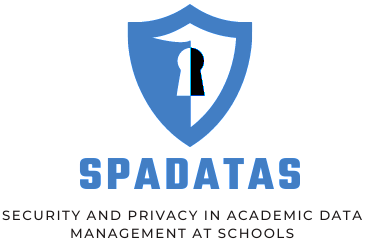Integrating Digital Literacy and Safety in Education
In the digital age, the integration of technology into education is not just beneficial; it’s essential. As educators, our role extends beyond traditional teaching to include guiding students in navigating the digital world responsibly and effectively.

Here are comprehensive strategies to incorporate digital literacy and safety into the educational framework:
- Embrace Generational Communication Techniques: Recognize the evolving communication landscape shaped by digital advancements. Strive to incorporate current and popular digital communication tools in your teaching methods to better connect with students and enhance their learning experience.
- Develop Digital Competence: Gain a fundamental understanding of the internet and mobile technologies. This knowledge is crucial for identifying potential online risks and implementing effective teaching strategies that promote digital safety and responsibility among students.
- Integrate Digital Tools into Daily Routines: Make the internet a part of the everyday educational experience. This could involve using online resources for research, digital platforms for collaboration, or educational apps to reinforce learning concepts.
- Promote Digital Etiquette: Educate students about ‘netiquette’—the etiquette of the internet and digital communication. Encouraging respectful and considerate online behavior is vital for fostering a positive digital community and preventing cyberbullying.
- Collaborative Rule-Making: Work together with fellow educators, parents, and students to establish clear guidelines for internet and mobile device usage within the school environment. This collaborative approach ensures that rules are comprehensive, inclusive, and respectful of diverse perspectives.
- Encourage Open Dialogue: When formulating digital usage policies, actively seek and incorporate feedback from all stakeholders, including students. This inclusive strategy ensures that rules are relevant, effective, and respectful of the needs and rights of different age groups.
- Educate on Online Risks: Proactively teach students about the potential dangers of the online world, such as privacy breaches and cyber threats. Emphasize the importance of cautious sharing of personal information and the potential consequences of online actions.
- Critical Evaluation of Online Content: Foster critical thinking skills by discussing the reliability of internet content. Teach students how to assess the credibility of sources and discern between factual information and misinformation.
- Transparency about Content Filtering: If your school employs content filtering systems to regulate internet access, explain the rationale and workings of these systems clearly to students, parents, and staff to ensure understanding and compliance.
- Promote Technical Savvy and Security: Educate yourself and your students about basic computer security measures, such as using strong passwords and recognizing phishing attempts. Ensuring technical protection for personal and school devices is crucial in safeguarding against digital threats.
By weaving these strategies into the fabric of our educational practices, we can equip our students with the digital literacy and ethical understanding they need to thrive in the digital world. This comprehensive approach not only enhances their learning experience but also prepares them to navigate the complexities of the digital landscape with confidence and responsibility.
